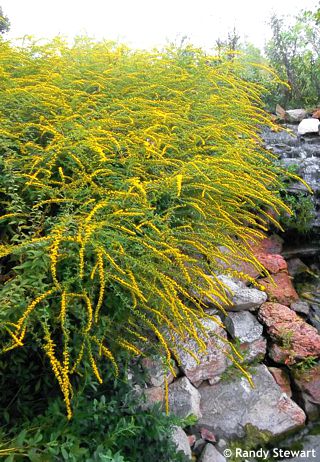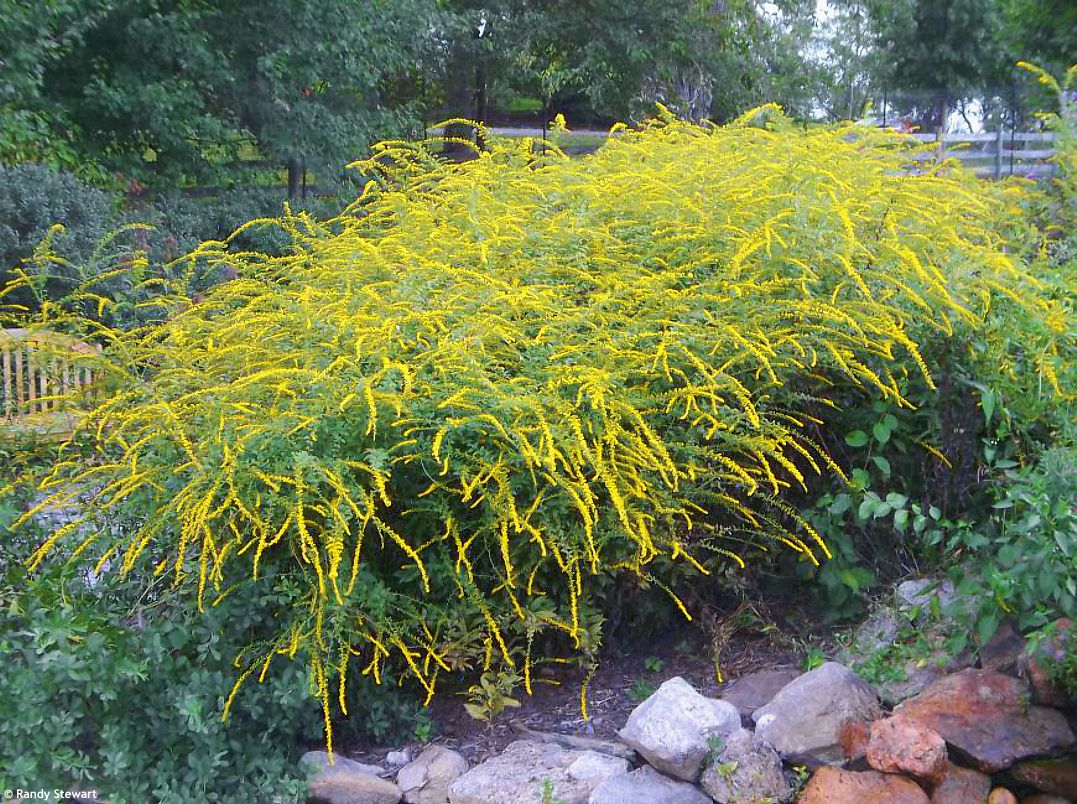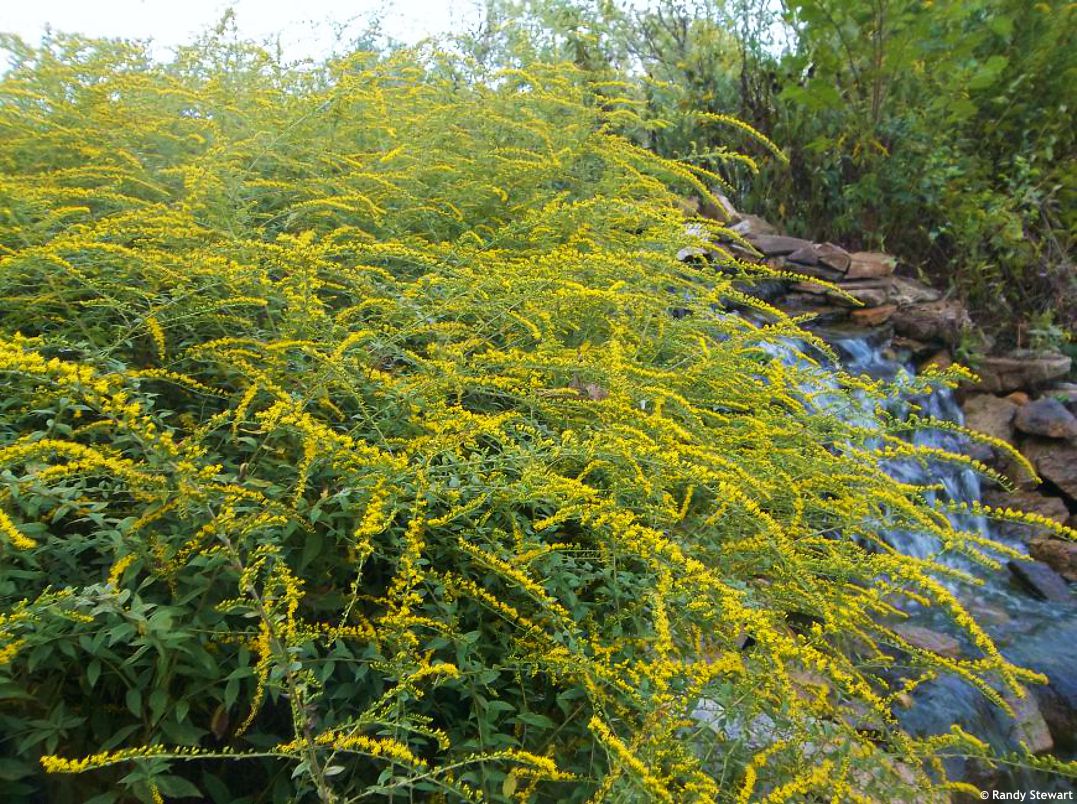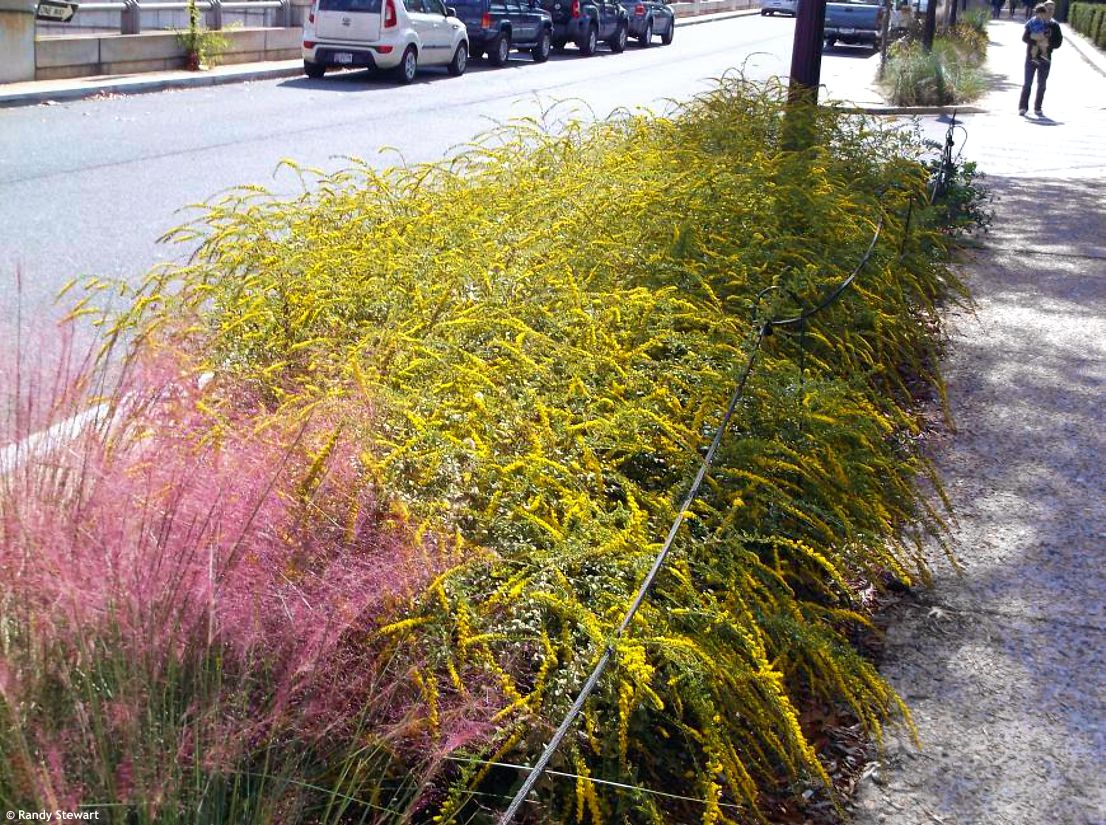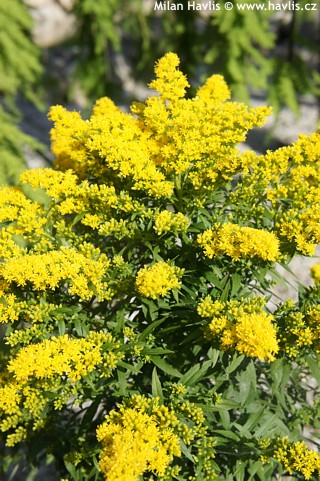Solidago rugosa 'FIREWORKS' rough goldenrod
Solidago
Goldenrod is a beautiful, flowering perennial that has been used in traditional medicine for hundreds of years and has adorned our gardens for a slightly shorter period. Many species find a way to live happily in almost any habitat and some are rated as invasive where they are native. Therefore, breeders aim to cultivate varieties that are well-behaved like the good boys from Sunday school. Two main characteristics are emphasized – clumping growth without runners and shorter height. There are more than 120 species, most of which are found in meadows, prairies, savannas, and occasionally along waterways in North America, with a few native to Latin America and a handful in Europe, though botanists believe they were brought here from America. This includes the species S. virgaurea (common goldenrod), which is considered the only native Central European species.
Fireworks is a unique variety of rough goldenrod that stands out from the rest with its arching habit and long flower racemes that open at the very end of the season – in early autumn. The inflorescences are slender but very long, reaching 30-40 cm, and are covered with small, bright yellow, star-shaped flowers. Since they bloom at the tips of thin and arching stems, the variety name ‘Fireworks’ aptly describes what it resembles – a just-exploded firework in the sky.
The deciduous leaves are medium green, narrowly lance-shaped, about 5-8 cm long, and their deep veins make them look wrinkled and rough, hence the species name. Being less conspicuous, they allow the arching stems drag the attention, which gives the plant a soft and airy feeling. Due to its late blooming and the fact that the stems bend deeper just before flowering, you can plant this goldenrod in a second row of a perennial border, behind earlier blooming perennials of lower height. Because when their blooming ends in August, the goldenrod takes over and provides a great display almost until the first frosts.
Goldenrods are not demanding as to soil type, but rough goldenrod prefers moist soil and can even tolerate slight waterlogging and clay soil. It thrives best in full sun. Once established, it can withstand occasional droughts. It is not prone to pests or diseases and is wrongly accused of causing allergies – it is not an allergen. It is absolutely maintenance-free, just remove old stems in early spring and let it grow again, no fertilizing needed. Fireworks goldenrod is not invasive and stays in one tuft without creeping rhizomes. It is hardy to at least -34°C.
Last update 30-1-2025

































